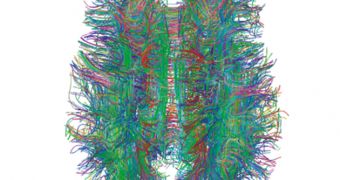A group of investigators at the Medical University of South Carolina (MUSC), in Charleston, announces the development of a new measuring tool capable of determining the amount of iron in the human brain with great efficiency. This approach could significantly benefit children, teens and adults suffering from attention deficit hyperactivity disorder (ADHD).
Details of the method, called magnetic field correlation (MFC) imaging, are presented today, December 2, at the annual meeting of the Radiological Society of North America (RSNA). The technique is based on Magnetic Resonance Imaging (MRI), but improves on it significantly for certain applications.
In a new study, the MUSC team was able to use MFC to measure the amount of iron in the brains of 22 ADHD test subjects in a non-invasive manner. A total of 17 control subjects were also analyzed to provide a baseline for comparing data. Iron plays several very important roles in the human body.
One of these roles is aiding in the synthesis of dopamine, a key neurotransmitter that is involved in processes related to addiction. In ADHD patients, dopamine levels are relatively low, and this imbalance is addressed with psychostimulant drugs such as Ritalin and Adderall.
However, it can sometimes be very difficult for doctors and parents to figure out exactly how much drugs their children should take. The MUSC team believes that MFC can from now on be used as a non-invasive, simple way of detecting dopamine insufficiency by analyzing iron concentrations in the brain.
At this point, ADHD is believed to affect anywhere from 3 to 7 percent of all school-age children in the United States. The condition, characterized by the inability to remain attentive, through hyperactivity and through behavioral control difficulties, can last well into adulthood, EurekAlert reports.
“Studies show that psychostimulant drugs increase dopamine levels and help the kids that we suspect have lower dopamine levels. As brain iron is required for dopamine synthesis, assessment of iron levels with MRI may provide a noninvasive, indirect measure of dopamine,” says Vitria Adisetiyo, PhD, who is a postdoctoral research fellow at MUSC.
“MRI relaxation rates are the more conventional way to measure brain iron, but they are not very specific. We added MFC because it offers more refined specificity,” the researcher adds.
The MFC technique was developed in 2006 by MUSC researchers Joseph A. Helpern, PhD, and Jens H. Jensen, PhD, who are both coauthors of the new study.

 14 DAY TRIAL //
14 DAY TRIAL //